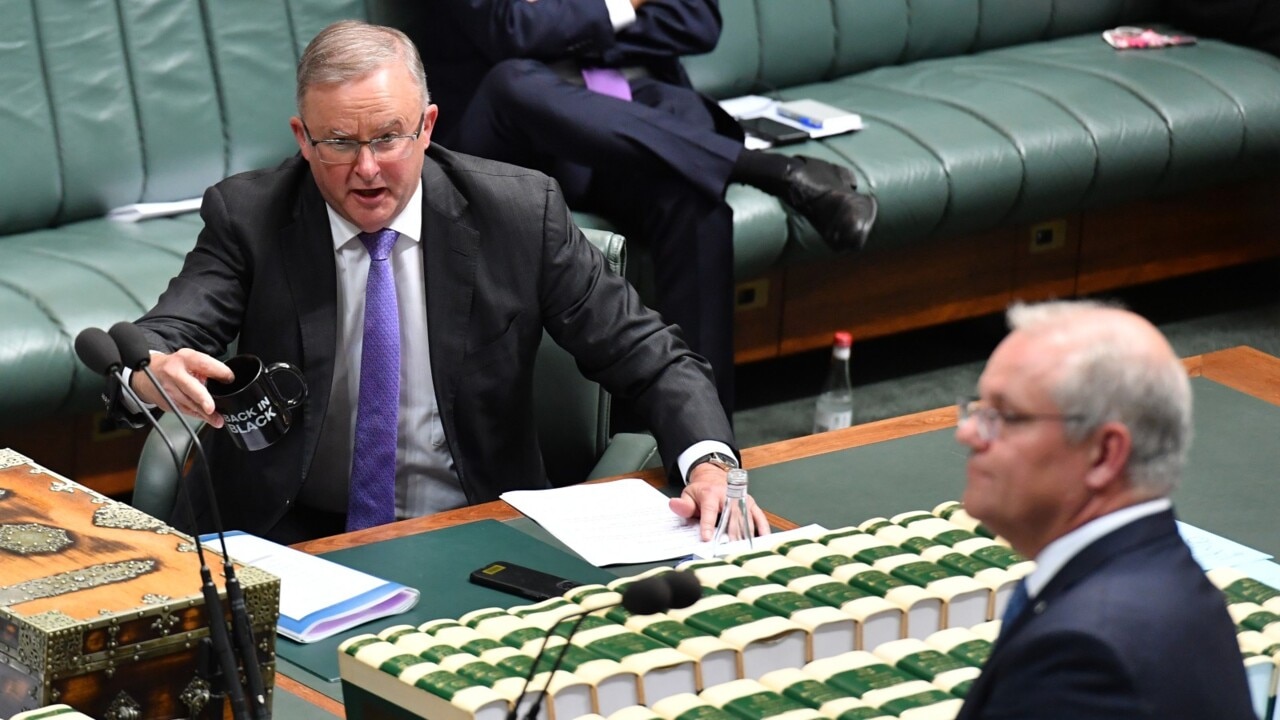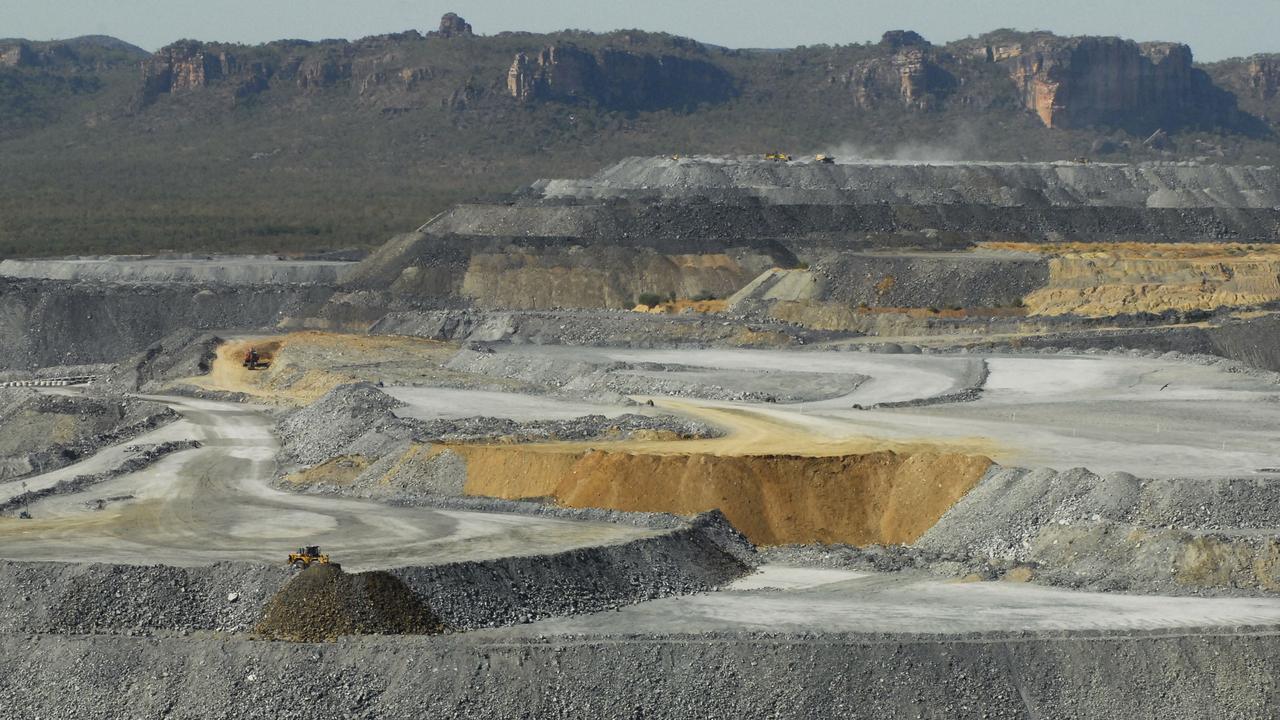ERA scrambles to find $1.2bn to rehabiliate Ranger mine
The largest mine rehabilitation in Australia’s history has left Energy Resource Australia scrambling for cash.

UPDATE: THE largest mine rehabilitation in Australia’s history has left Energy Resource Australia (ERA) scrambling for cash.
After announcing the company would need to invest a further $1.2bn to rehabilitate the decommissioned Ranger Mine the company’s share prices have dropped by 6.25 per cent.
ERA said as of December 31, 2021 the company had $699m in cash funding and $535m held by the Commonwealth government as part of the Ranger Rehabilitation Trust Fund. A further $125m is held in bank guarantees by the Commonwealth government.
As a result of the review the company said it was “currently reviewing all available funding” to ensure reforecast costs of the closure and rehabilitation plans could be met.
In 2019 Rio Tinto increased it shares in ERA to become 86 per cent shareholder and finance a large portion of the rehabilitation plan.
In the statement released last week Rio Tinto reaffirmed its commitment to working with ERA to rehabilitate the uranium mine site.
“Rio Tinto has advised ERA that it is committed to working with ERA to ensure that the rehabilitation of the Ranger Project Area is successfully achieved,” the statement read.
ERA also reconfirmed its commitment to Traditional Owners, Mirarr People, that it would meet its “obligations to return the land to an environment similar to the adjacent areas of the world heritage listed Kakadu National Park.”
Key budget blowouts were attributed to re-evaluating disposal of uranium tailings and unbudgeted costs for land forming and water run off based on “recent experience of rehabilitation Pit 1.”
The revised work is also expected to blow out time frames which are restricted by the current Atomic Energy Act.
The statement said under the terms of the 1953 Atomic Energy Act, completion of the rehab works is required by 2026, but is now likely to be towards mid-2028. The revised plan has renewed calls for amendments to the Act.
EARLIER: A REVIEW of ERA’s Ranger Mine closure plans has shown the company severely underestimated the time and cost for rehabilitating the site.
In a statement released on Wednesday the largely owned Rio Tinto subsidiary said the budget could blow out by $1.2b.
Mirarr senior Traditional Owner Yvonne Margarula said the true cost and clean up was welcomed by her people.
“The true cost of Ranger’s clean-up reiterates the need for both industry and the Australian Government to remain true to their commitments at Kakadu,” she said.
“Ranger has operated on our country for over forty years; I have been waiting for this nearly all my life. ERA and Rio Tinto promised me that everything would be cleaned up properly, but I am worried that the government has forgotten that.”
Following the review of the rehabilitation strategy by engineering company Bechtel, the total cost was revised from $973m to between $1.6bn and $2.2bn.
Six reasons were given for the cost and schedule overruns including water treatment costs, additional costs in tailings transfer and conversion of the tailings storage facility into a Water Storage Facility and emergent technical risks in capping Pit 3 works.
The revised work is also expected to blow out time frames which are restricted by the current Atomic Energy Act.

The statement said under the terms of the 1953 Atomic Energy Act, completion of the rehab works is required by 2026, but is now likely to be towards mid 2028.
‘ERA has been engaging with Government and key stakeholders to amend the (Act) and extend the expiry date of ERA’s tenure on the Ranger Project Area,’ the statement said.
The plan renews calls for amendments to the almost 70 year old legislation which would ensure the mining company is accountable for rehabilitating the land till it can successfully be reintegrated into the world heritage listed Kakadu National Park.
Gundjeihmi chief executive Justin O’Brien said the Australian Government must now expedite legislative amendments to provide ERA with continued access past 2026.
“Not enough has been done to fix the unrealistic schedule set by federal legislation for rehabilitation. We refused to support ministerial approval of the 2020 Ranger Mine Closure Plan for this reason,” he said.
“This is now a critical point for both the environment and for Indigenous land and cultural rights. As ERA completes the reforecast, we look forward to more certainty about the true scale of the task ahead.”
Calls for urgent amendments to the law are also supported by the Enivonment Centre NT who have called on the Commonwealth to make amendments to Atomic Energy Act. According to a spokesman for the environmental lobby amendments were supposed to be tabled for federal parliamnet last year.

“Our concerns largely revolve around the fact that because of time constraints, poor rehabilitation decisions are being made (at Ranger mine),” he said.
“These include the decision to leave the tailings wall and the floor of the tailings dam in situ rather than be actively remediated; the unexplained de-prioritisations of the tailings plume as a high-risk issue and the consequent failure to clearly articulate a remediation plan for the tailings plume. Issues around cost and accountability are also forefront.”
Mr O’Brien also said many people are rightly concerned about the potential environmental impact that this rehabilitation project is having on the World Heritage listed Kakadu National Park.
EARLIER: THE Ranger uranium mine will bury 90 million tonnes of uranium waste in a pit on the edge of Kakadu National Park.
Energy Resources of Australia (ERA) confirmed over the next five years approximately 90 million tonnes of waste rock, material, mine plant and equipment will be buried in Pit 3 at Ranger Mine, just 14km from Jabiru township.

An ERA spokeswoman said that, over the past 40 years, mining equipment used at the Ranger mine had been exposed to uranium oxide production processes.
“Following assessment by relevant scientific and regulatory authorities, it was determined that removing this equipment for disposal at an offsite location was not appropriate,” she said.
“Subsequently, the Traditional Owners - Mirarr People, and the scientific regulators who have studied Ranger in detail, have approved equipment burial as the most prudent and environmentally favourable outcome for this site.”
According to the mine closure plans the contaminants must remain physically isolated from the environment for at least 10,000 years, which is the responsibility of ERA.
The plans are contingent on approval from the Federal Government, who consult with traditional owners and the Northern Land Council.
However, under section 41 of the current Atomic Energy Act, ERA will only be permitted on the site till 2026.
The Gundjeihmi Aboriginal Corporation (GAC) says the rehabilitation of Ranger Mine is now at a critical stage.
GAC chief executive Justin O’Brien said the ERA and the Federal Government had not formalised rehabilitation plans that would ensure the site could eventually be reincorporated into the World Heritage listed Kakadu National Park (KNP).
“The Mine Closure Plan for the Ranger mine is currently undergoing a major review as a result of the reforecast of both the cost and schedule being undertaken by the company,” he said.

“The revised plan will be reviewed by the Northern Land Council (NLC), GAC and the supervising scientist, who will consider the advice of Alligator Rivers Region Advisory Committee (ARRAC).”
Mr O’Brien said the site is of enormous cultural heritage value to the traditional owners, as is the surrounding Kakadu National Park.
“At the outset, 40 years ago, the Australian Government promised the traditional owners there would be world class rehabilitation of the site and complete protection of KNP,” he said.
“We are now at the most critical point where those promises must be delivered.”
According to GAC, the federal government needs to make a series of crucial decisions in coming months to ensure it fulfils the promises it made to the Mirarr People in the 1970s and meets the expectations of the traditional owners by ensuring the protection of the site and of Kakadu for all Australians.
Last year, ERA admitted amendments to the Atomic Energy Act would enable the business to apply for further authorities to continue rehabilitating the land past 2026.
“ERA supports a minor amendment of the Atomic Energy Act, which would enable ERA to apply for a further Section 41 Authority, as an appropriate mechanism to extend the existing legislative framework,” the statement read.
“The grant of a new Section 41 Authority by the Commonwealth would meet the objectives of land access for monitoring and maintenance purposes and also maintain the environmental requirements as the basis for the close-out of Ranger.”
More Coverage
Originally published as ERA scrambles to find $1.2bn to rehabiliate Ranger mine




